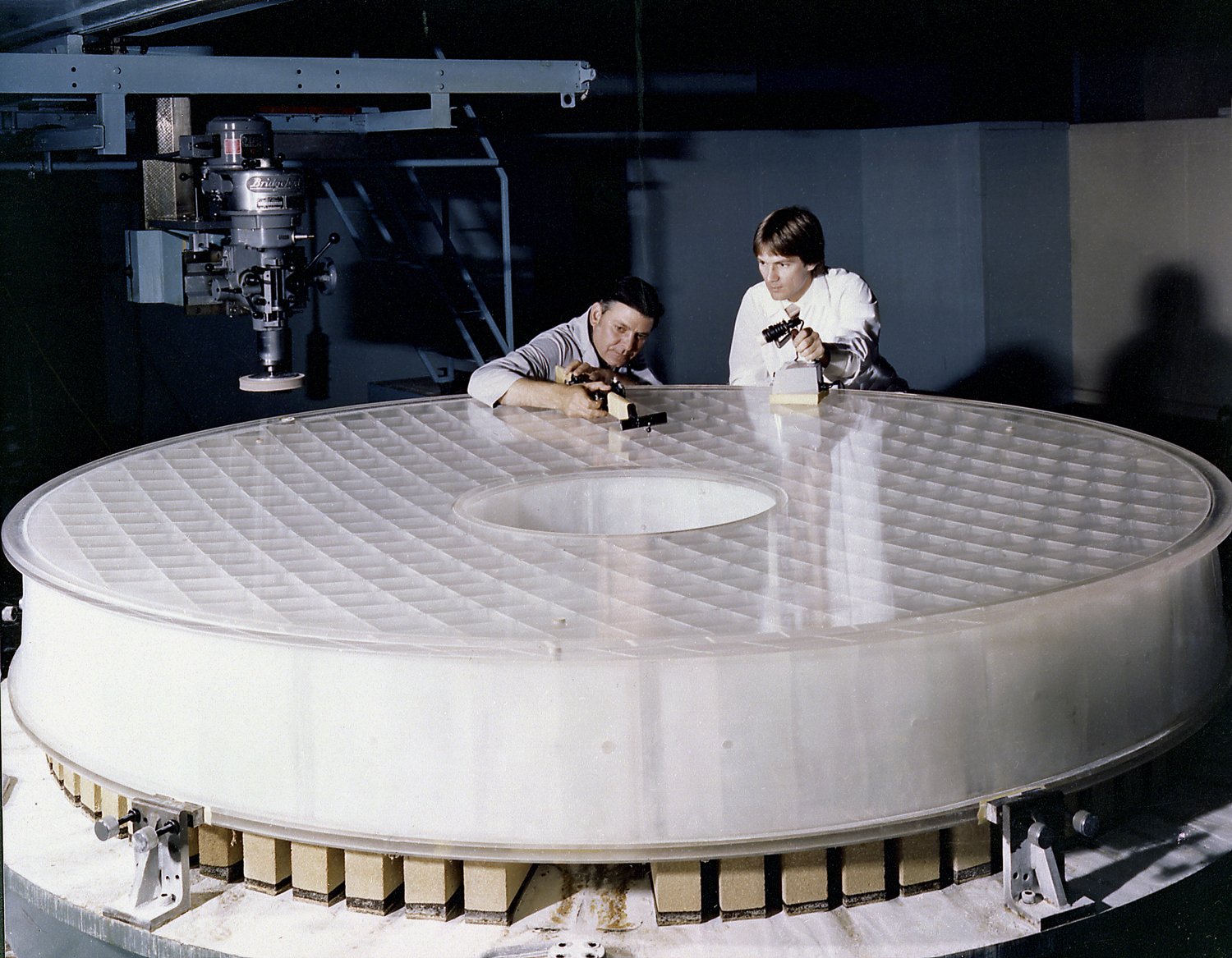The release of Windows 3.0. The first season of The Simpsons. "Vogue."
It was a much different time when the Hubble Space Telescope took off aboard the space shuttle Discovery on this day in 1990. But much like how we've ditched our Umbros for Under Armour and traded our slap bracelets for Apple Watches, Hubble has come a long way since then.
The space telescope created by NASA and ESA has taught us countless things about the universe that surrounds us, and its breathtaking images have inspired a whole new generation of scientists. (And yes, they also make great computer wallpapers.) For much of Hubble's early life in space, however, it was easy to look at the project as a failure. Outlets at the time called it "a national joke." A tiny imperfection in the mirror meant that all of the images it took were fuzzy and out of focus, and it took five separate repair missions to get it to the excellent shape it's in today. (One of those astronauts, Mike Massimino, wrote a particularly excellent first-person account in 2013 of what it was like to repair the telescope 353 miles above Earth.)

Engineers inspect Hubble's main mirror.
Being the 25th anniversary, the amount of tributes on the internet to Hubble is vast. Nature spoke to more than a dozen scientists and Hubble team members to compile a wonderful oral history of the telescope. Phil Plait, who runs Slate's "Bad Astronomer" blog and worked on Hubble for a number of years, wrote some great explanations of some of the most famous images to come from the project. The New York Times put together a good explainer video of how the Hubble works and spoke to some astronomers about their favorite images they took with the space telescope. Lee Billings took some time at Scientific American to laud Hubble's unsung images, the ones that won't necessarily wow you but mean a great deal to the project and to our understanding of the universe.
Elsewhere, Vox has a great breakdown of one of Hubble's most famous images, Discover assembled a detailed timeline, and National Geographic tells you why Hubble images appear in color (they're really photographed in black and white) and includes a must-see interactive feature that breaks down how the telescope works, piece by piece.
This image was released in honor of Hubble's 25th anniversary. The computer-simulated fly-through video is a must-watch.
Hubble's days are numbered, but it's not totally clear when it will close its eye for the final time; one thing NASA is excellent at is getting extra value out of its missions. After all, the Opportunity rover, which landed on Mars in 2005, is still roaming the surface and gathering data — even though it was only supposed to last around 90 days. And the Kepler Space Telescope has been helping us find other planets in our own galaxy since 2009, even after a massive mechanical failure. If Hubble can avoid another one of those, it's likely the telescope will continue to operate well into the 2020s.
One thing we do know is that the Hubble's successor, the James Webb Space Telescope, is going to be even better. It has a mirror that is six times larger than Hubble's and will be at least 100 times as powerful. The Webb telescope will peer even deeper into the night sky, bringing us closer to seeing the very first stars ever formed. That won't happen until at least 2018, however, and it's a mission that — like many — has already suffered delays and gone way over budget. And the Webb telescope is going much further out into space than Hubble, meaning there will be no chance for humans to visit it for repairs should anything go wrong.
Until that gets off the ground, scientists around the world will continue to use Hubble to stare out in space and back in time as they try to figure out how — and why — we're all here. With that in mind, here is just a small collection of some of the best and most important images taken by the Hubble Space Telescope.
All images courtesy of NASA and ESA.
1/25
:format(webp)/cdn.vox-cdn.com/uploads/chorus_asset/file/13075323/GettyImages-72315315.0.1429886041.jpg)
:format(webp)/cdn.vox-cdn.com/uploads/chorus_asset/file/13075323/GettyImages-72315315.0.1429886041.jpg)
Share this story